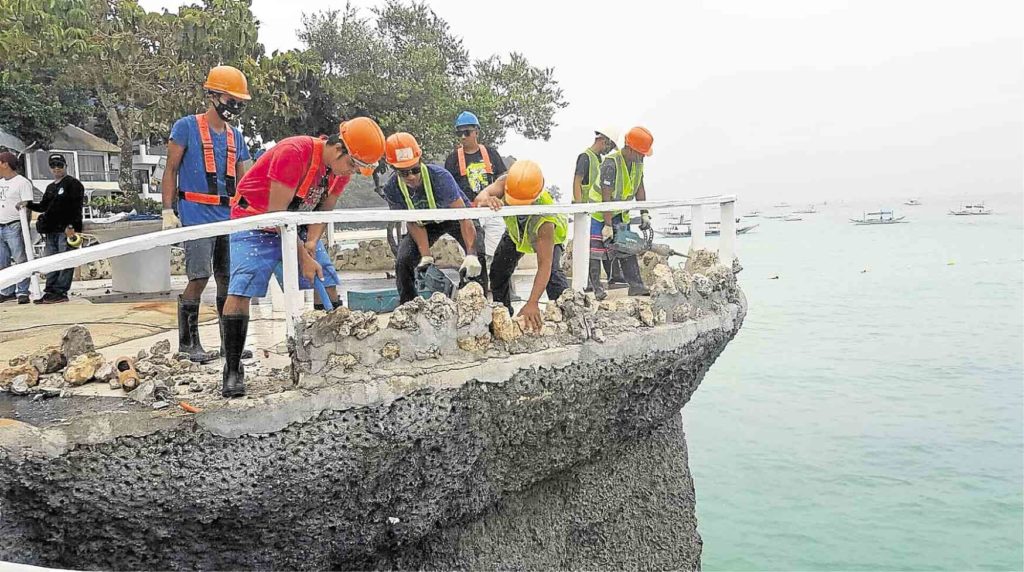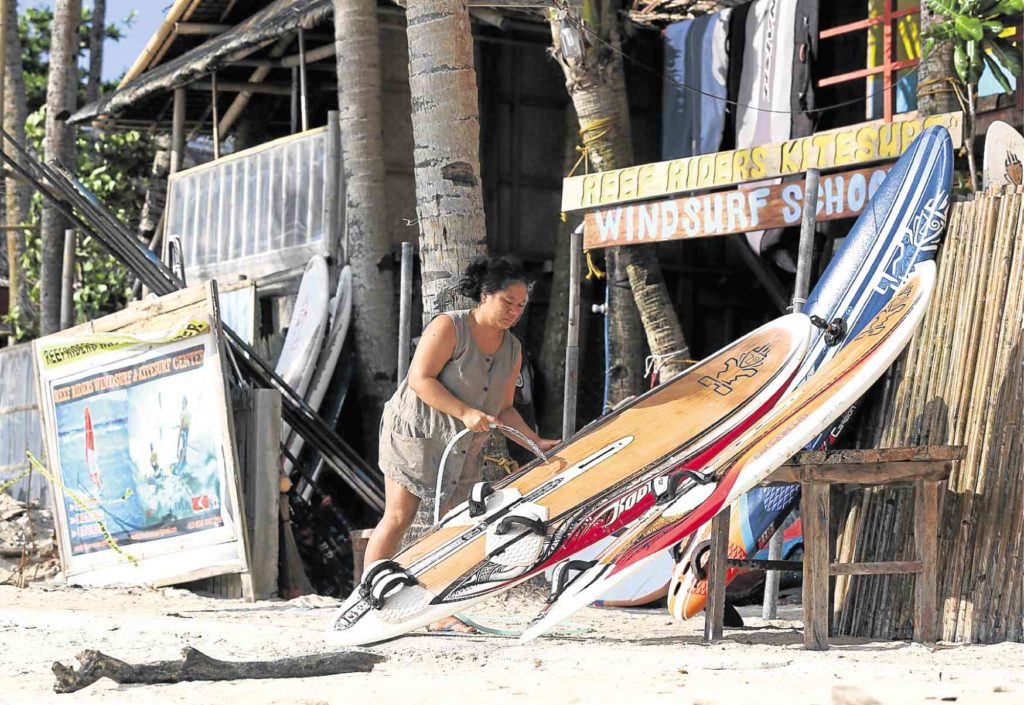‘Laboracay’ no more

Environmental violations and degradation in the island are expected to be solved in the next 6 months.
It’s now official.
A proclamation signed by President Duterte on Thursday, April 26, placed three barangays in Boracay Island under a state of calamity, thus justifying the six-month closure of this world famous tourist hotspot.
Specifically, Proclamation No. 475, s. 2018 declared “a state of calamity in the barangays of Balabag, Manoc-Manoc and Yapak (Island of Boracay) in the Municipality of Malay, Aklan, and temporary closure of the island as a tourist destination.”
This shutdown, approved by Duterte on April 4, seeks to clean up what was once dubbed as the world’s best island and rid it of the “cesspool” tag given by no less than the President himself.
In the six months that Boracay is off-limits to tourists, government agencies are expected to solve the environmental violations and degradation in the island, including overcrowding, inadequate sewage facilities, waste disposal, transportation, neglected infrastructure, growth of resort establishments and illegal settlements.
Only residents, workers and government personnel would be allowed entry during the closure and visitor entry would be allowed only on two conditions—if there’s an emergency and with permission by security officials. Residents would be required to secure and present government-issued identification cards for access to the island.

A truck filled with bags of trash and seaweeds washed ashore and gathered by volunteers during a coastal clean-up.
Repercussions
But what happens now?
Clearly, the six-month closure of this resort island—famous for its powdery white sand and the 4-kilometer stretch dubbed as the finest beach in the world—has serious repercussions, considering that it attracts millions of tourists yearly.
According to government estimates, this closure will cost the economy some P1.96 billion, and would shed only 0.1 percent from the gross domestic product this year. The private sector, however, reportedly pegged the economic losses at about P50 billion in tourism revenues.
More than 30,000 jobs are also seen to be displaced by this decision to rehabilitate the island. Also affected are the local suppliers of meat, vegetables and fruits to the hotels and restaurants in Boracay, as well as government hospitals, whose operational funds are reported to come from terminal fees paid by tourists at the Caticlan port.
The decline in demand for electricity in the island is seen to lead to a surplus of energy, the cost of which is expected to be passed on to end consumers in Aklan and nearby provinces, news reports further showed.
Remedies
Amid concerns and the apprehension of workers and business owners in the island, the government and the private sector have set in motion a series of possible interventions and remedies to help cushion the impact of the said closure.
Trade Secretary Ramon Lopez was quoted as saying that their department has requested for P300 million out of the P2 billion worth of calamity funds that would reportedly be used to help displaced workers.
The said amount would be used by the Department of Trade and Industry to provide market access and various services such as livelihood training.
The Department of Social Welfare and Development had earlier announced that it would assist some 19,000 registered and 17,000 informal workers by teaching them new skills that can be applied in other industries. It had also proposed a P2-billion budget for cash and livelihood assistance to workers who would be out of work.
The agency has likewise started to prepare assistance for transport cooperative associations and their members, as well as for other informal sector workers such as those who make and sell handicrafts, the food vendors, and those who tend small shops and stalls.
Rehabilitation works
Over the next six months until October 25, 2018, urgent measures “to address human-induced hazards to protect and promote the health and well being of the residents, workers and tourists, and to rehabilitate the island in order to ensure the sustainability of the area,” are expected to be rolled out.
This may include drainage audit to spot illegal connections; construction of new drainage and sewer lines; demolition of structures illegally built on forestlands and wetlands and those that violate easement restrictions; and fixing of transportation system.
Officials will likewise go around the establishments in Boracay to determine which of them had violated environmental standards. Violators will be ordered shut down.
The carrying capacity of the 1,032-ha island will also be determined as this will serve as basis for regulating the entry of visitors and the construction of new establishments, according to Assistant Local Government Secretary Epimaco Densing.
Addressing issues
But even before the start of the shutdown, the local government unit of Malay, Aklan, in which Boracay belongs, had begun addressing issues surrounding the island.
On Feb. 17, the Malay government formulated a six-month action plan, to serve as checklist for stakeholders and to track the progress in confronting the issues surrounding Boracay. Among the efforts initiated by the Malay government are the inventory of land owners and structure and a dialogue with stakeholders and land owners.
It has also intensified the identification system as a means of in-migration control through ID coding.
A memorandum was also issued directing utility providers to abide by the local ordinance that ordered the disconnection of water, power and telephone lines of buildings or structures with no necessary permits.
Under Oplan Hawan, the local government had started to demolish illegal structures in Puka Beach and Long Beach.
On March 13, a moratorium on building construction was imposed, with the exemption of local and national government projects, repairs on institutional centers vital to the community, and those compliant with environmental laws.
The municipal mayor also issued an order for the closure of businesses without permits.
All these efforts will continue in the next months.
In the meantime, local and foreign tourists will have to wait for just six months for all these measures and rehabilitation efforts to be fully implemented and to take effect. Once the island has been nursed back to health, Boracay will soon open to the world once more.
Sources: Inquirer Archives, malay.gov.ph, www.officialgazette.gov.ph
